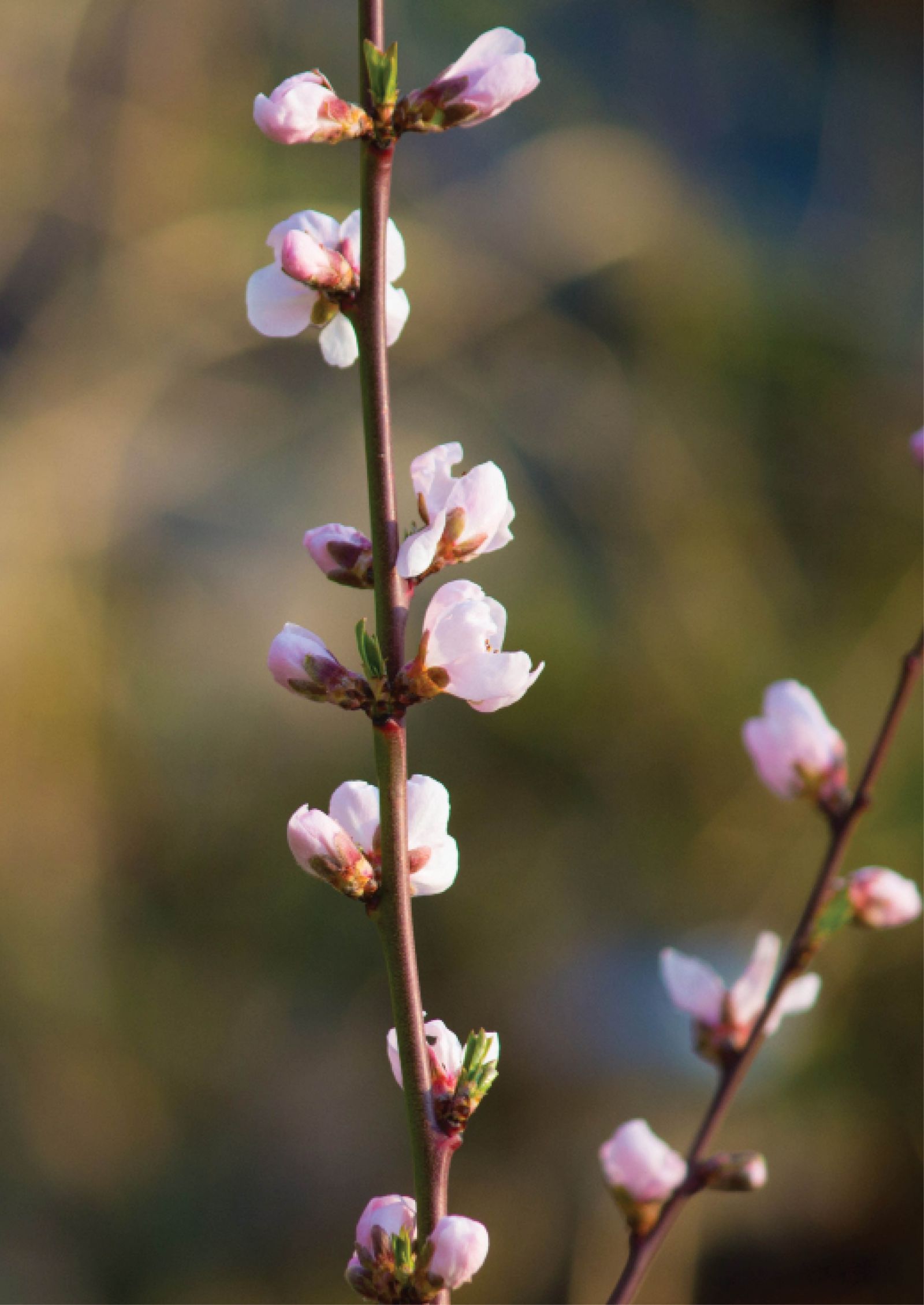
Luckily, a certain flower lover planted them next to a tree on the sidewalk. They soon took root and grew up, then gave flowers on the next Tet, small but full of spring.
There is such a Prunus Persica blossom tree on the road that I take every day. It gives light pink flowers. Since I am not sure how long it has been present on this road, I call it “the last year’s Prunus Persica blossom tree” after the well-known Tang poem: “There are no human beings/ Just the last year’s Prunus Persica blossom smiling in the winter wind.”
Every year, in the season of north winds, the Prunus Persica blossom tree blooms to herald the coming spring. Behind the tree are a man who earns his living by repairing motorbikes, a woman who sells meat, a man who makes joss paper, or a woman who does hair. They all are working hard on the last days of the year to earn extra money for Tet. I wonder they ever have time to behold the Prunus Persica blossom near them.
"It's the end of the year. I miss Hue Tet so much. Write something, my friend,” texted my friend from far away.
Missing Hue means missing familiar streets and cozy villages waiting for Tet to return. In the afternoon of lunar December, sitting on the sidewalk looking at the Prunus Persica blossom, busy poor laborers, and someone’s tray of offerings wrapped in incense smoke across the street, and reading the message from a friend, I feels warm inside.
Hue is dry now. The cold is decreasing and people can feel Tet is coming through the sweet aroma of ginger being made into jam as well as the Prunus Persica blossom on the sidewalk. In someone’s garden, Bach mai (Prunus mume Sieb. & Zucc) are waiting for Hue typical Hoang mai (Ochna integerrima) to bloom during a spring night.
I hear someone whispering "the old year is coming to an end and Tet is coming.” Tet is not only a joy, but also a worry. The last days of a year are when one looks back to ponder and to get rid of bad things.
Lunar December is the most cherished time of the year. Someone’s kitchen is warm with a fire and fragrant with cake and jam being made. Meals with boiled pumpkin buds and sweet potato greens dipped in broth made with shrimp paste and spicy braised river fish are waiting for children to return home for Tet. A sidewalk cafe is playing immortal tunes of spring reminding people that deep in their heart they always wait for Tet.
In lunar December, I went to my native village to burn incense on my parents’ graves. As soon as I got to the field at the beginning of the village, I stopped to take a photo of the vegetable field.
“You have to pay to take pictures,” said a farmer who was tending his vegetables. Knowing that he was kidding I talked back: “The vegetables are yours, but the land belongs to the village. This is also my village, so I have my part here too.” Hearing me say so, the man stood up to have a look and recognized me. “Oh, there you are!”
The village field is always what I miss very much. I miss the early mornings in spring when I followed my parents to visit my grandma for Tet. I happily walked on the field glowing with yellow leaf mustard flowers.
Now my parents are celebrating Tet at a very far-away place. My native village has changed a lot too. But the fields are still filled with the beauty and flavors as they were before. Spring, summer, fall, winter, then spring again, flowers and grass change their clothes with the seasons.
The farmer stopped working, pointed at the bright yellow leaf mustard flowers and said: “The leaf mustard flowers are not only beautiful but also very fragrant, especially in the early morning and late afternoon. Its aroma flies from the field into the house.” So, I did meet an artist from the village and suddenly recalled Huy Can's verse: "Fragrant grapefruit flowers late at night are bathed in the moonlight / The bitter leaf mustard flowers are bright in the golden afternoon.”
Searching my memory, the flowers of spring at my childhood were always Ochna integerrima, chrysanthemums, marigolds, or dahlias, but never modest vegetable flowers such as leaf mustard, cilantro, or chrysanthemum greens.
Now, after years of life and when my hair is getting grey, visiting the village field in the north wind announcing spring, I suddenly realize that the fields of leaf mustard flowers and coriander flowers are modest, but as beautiful as a surreal painting. One just recognizes their modest beauty over time.
It has been such a long time since I saw chrysanthemum greens flowers. That vegetable has two names. Tan O sounds weird while Cai Cuc sounds more gentle. Its stalk is like that of leaf mustard while its flowers are like chrysanthemums, hence its name Cai Cuc. Those many Cai Cuc with white petals and yellow pistils which smell bitter like leaf mustard flowers and last as long as chrysanthemums are grown in the garden by my parents.
After rainy and flood days, green buds appear from the cold, the heat of straws, and in the warmth of human hands. The field is always filled with leaf mustard and coriander flowers when spring comes.
Chrysanthemum greens flowers look so round in the wind. The immense field in my mom’s native village is full of spring flowers. I call them flowers-of-no-worries. They give, but never receive. Standing by the field in the last afternoon of the year, I wish I could be a child again just like a flower in the field which plays in breezes of spring.
Story: Phi Tan
Photo: Thanh Tra
